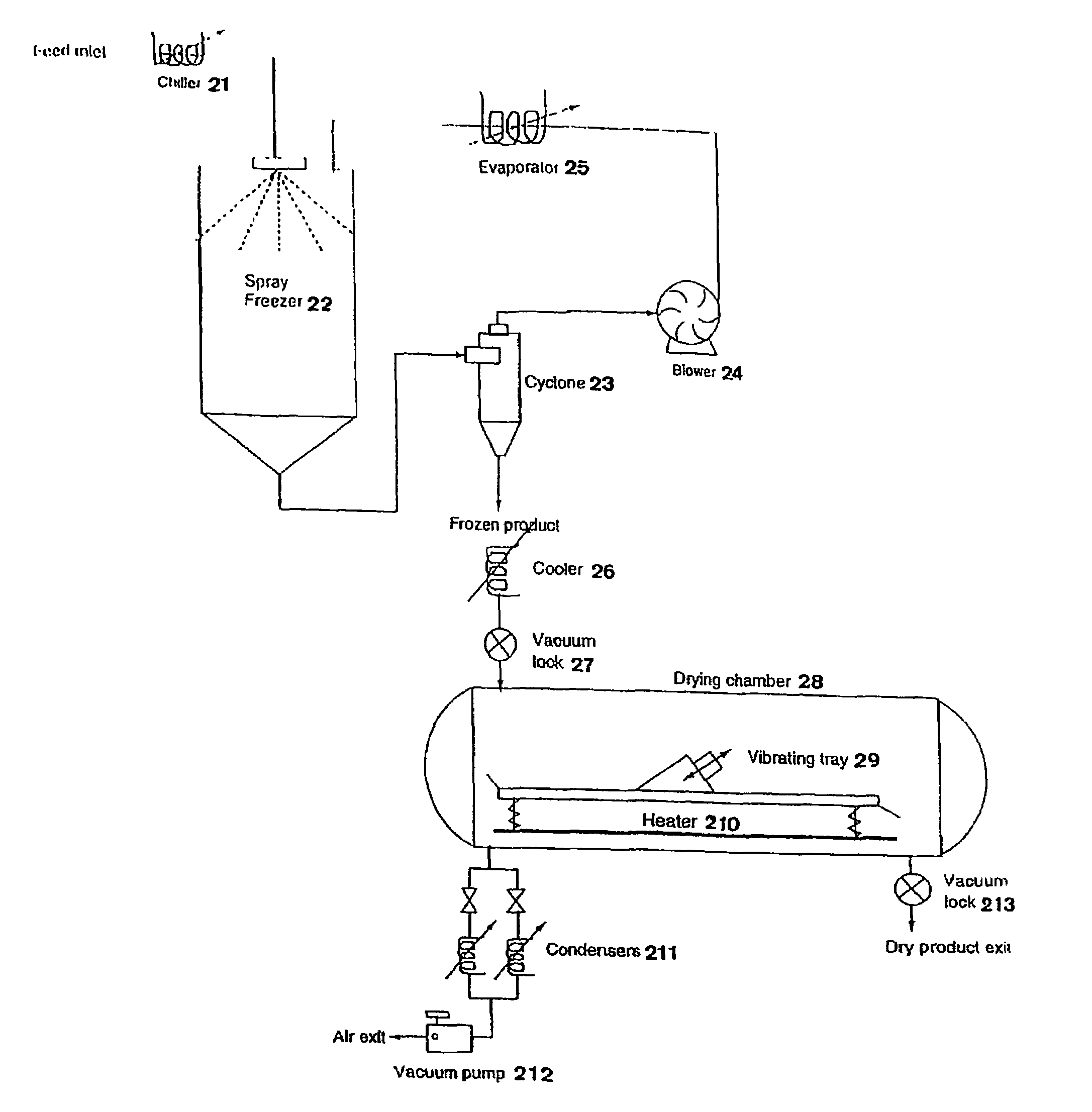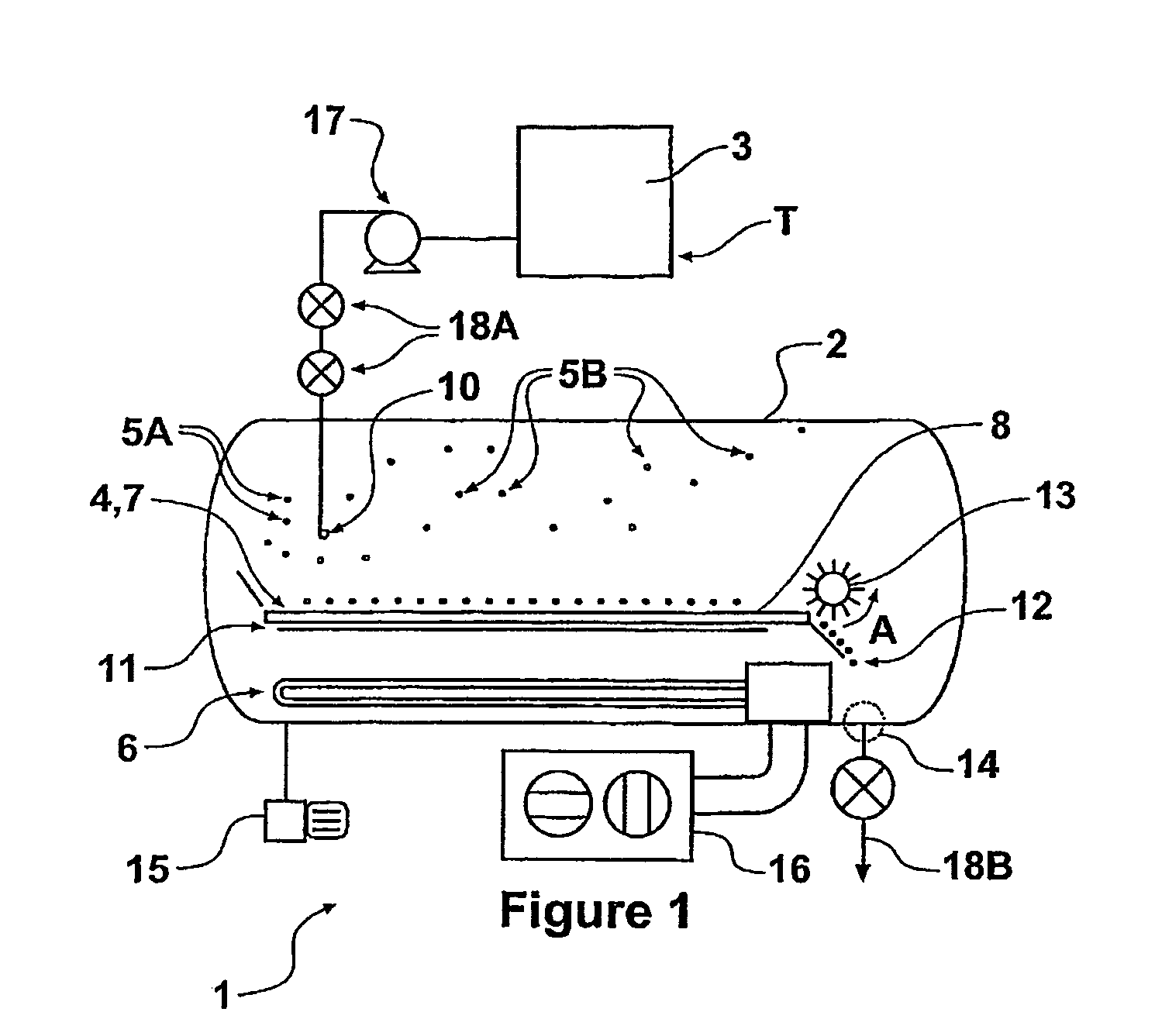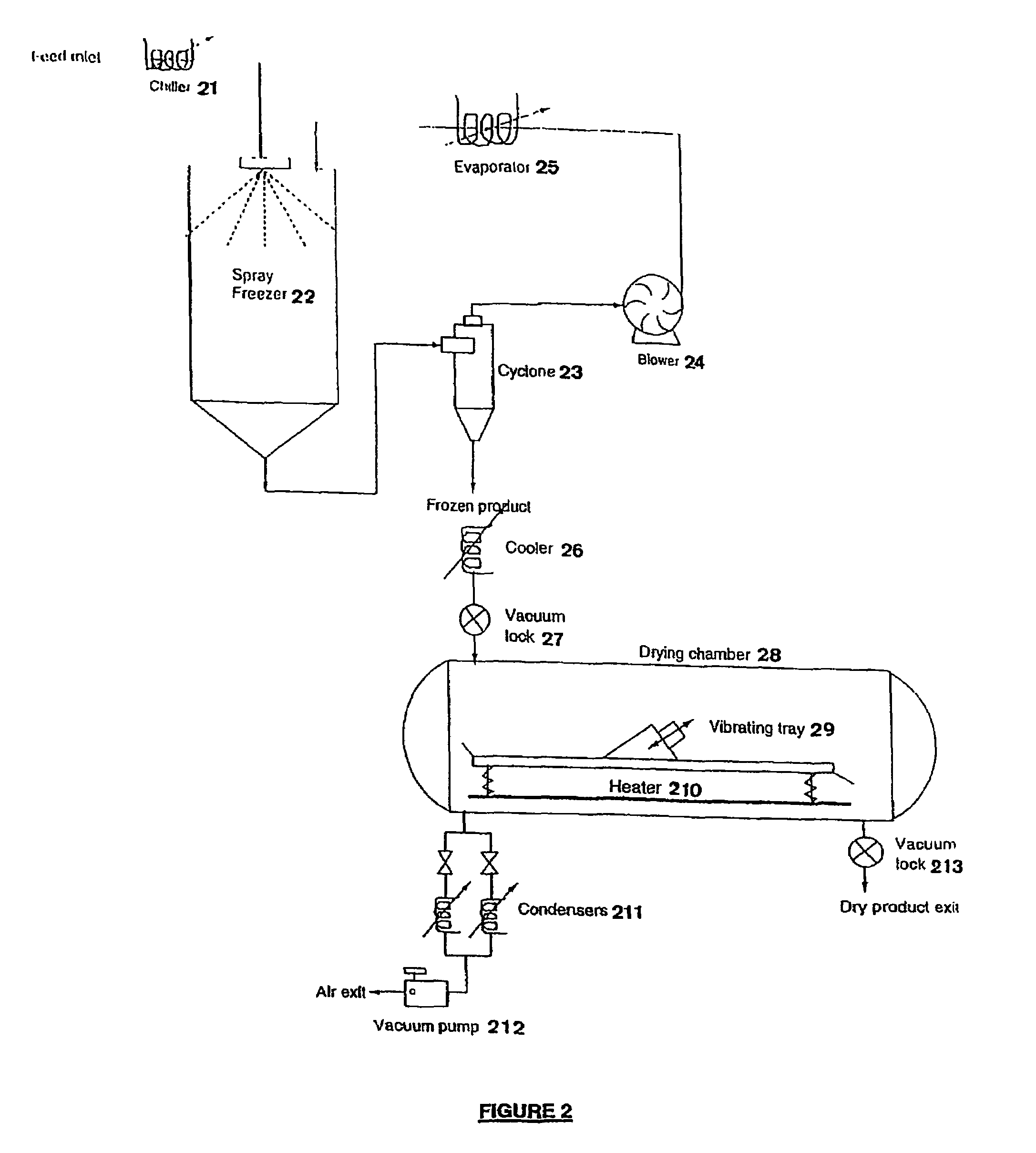Drying process and apparatus
a technology of drying process and drying apparatus, which is applied in the direction of lighting and heating apparatus, separation processes, physical/chemical process catalysts, etc., can solve the problems of product shrinkage and other detrimental effects, undesirable damage to products, and poorly optimised processing equipment often with excess capacity
- Summary
- Abstract
- Description
- Claims
- Application Information
AI Technical Summary
Benefits of technology
Problems solved by technology
Method used
Image
Examples
Embodiment Construction
[0154]The present invention may now be described with reference to FIGS. 1 to 5, and the accompanying description below.
[0155]The present invention relates to process for freeze drying or dehydrating / concentrating liquid substances. The process is applicable to liquids having a solid substance in suspension (for example milk) or to liquid solutions in which a substance has been dissolved. Tea, coffee, fruit juice, pharmaceuticals and nutraceuticals could also be processed using this spray freeze dryer.
[0156]Freeze drying is a useful preservation technique and among many other products, the following may be dried in this manner; instant coffee, vegetables for dried soup mixes, mushrooms, herbs, spices, cheese starter cultures, shrimp, fruits for ready-to-eat breakfast cereals, nutraceuticals, pharmaceuticals and agriceuticals.
[0157]Some specific end users of freeze dried products may Include the production of military and / or space rations as well as light weight camping foods contain...
PUM
| Property | Measurement | Unit |
|---|---|---|
| particle size | aaaaa | aaaaa |
| particle size | aaaaa | aaaaa |
| thickness | aaaaa | aaaaa |
Abstract
Description
Claims
Application Information
 Login to View More
Login to View More - R&D
- Intellectual Property
- Life Sciences
- Materials
- Tech Scout
- Unparalleled Data Quality
- Higher Quality Content
- 60% Fewer Hallucinations
Browse by: Latest US Patents, China's latest patents, Technical Efficacy Thesaurus, Application Domain, Technology Topic, Popular Technical Reports.
© 2025 PatSnap. All rights reserved.Legal|Privacy policy|Modern Slavery Act Transparency Statement|Sitemap|About US| Contact US: help@patsnap.com



